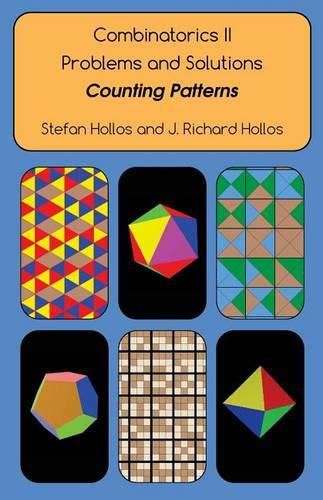Readings Newsletter
Become a Readings Member to make your shopping experience even easier.
Sign in or sign up for free!
You’re not far away from qualifying for FREE standard shipping within Australia
You’ve qualified for FREE standard shipping within Australia
The cart is loading…






This book deals mainly with pattern counting problems. It is a continuation of our previous combinatorics problem book. There are 80 problems with detailed solutions, including 70 figures, many of which are examples of patterns. The book will teach you powerful methods for counting patterns. These methods should be in the toolbox of every combinatorialist. It also provides the means to generate patterns with programs that can be downloaded from the book’s web page at abrazol.com. The book starts with patterns that can be described by regular expressions and finite automata. It shows how to get generating functions for families of patterns from a regular expression or it’s corresponding finite automaton. It then looks at pattern counting problems that involve equivalence under symmetry. For example, how many unique necklaces can one construct using beads of 3 different colors if a rotated necklace is considered the same as the original? These problems are surprisingly easy to answer using a method called Polya’s theory of counting. This method and its more general form, called Burnside’s theorem are covered. There are many worked out problems that show how to use these methods. Included are problems that find the number of unique ways to color the Platonic solids.
$9.00 standard shipping within Australia
FREE standard shipping within Australia for orders over $100.00
Express & International shipping calculated at checkout
This book deals mainly with pattern counting problems. It is a continuation of our previous combinatorics problem book. There are 80 problems with detailed solutions, including 70 figures, many of which are examples of patterns. The book will teach you powerful methods for counting patterns. These methods should be in the toolbox of every combinatorialist. It also provides the means to generate patterns with programs that can be downloaded from the book’s web page at abrazol.com. The book starts with patterns that can be described by regular expressions and finite automata. It shows how to get generating functions for families of patterns from a regular expression or it’s corresponding finite automaton. It then looks at pattern counting problems that involve equivalence under symmetry. For example, how many unique necklaces can one construct using beads of 3 different colors if a rotated necklace is considered the same as the original? These problems are surprisingly easy to answer using a method called Polya’s theory of counting. This method and its more general form, called Burnside’s theorem are covered. There are many worked out problems that show how to use these methods. Included are problems that find the number of unique ways to color the Platonic solids.